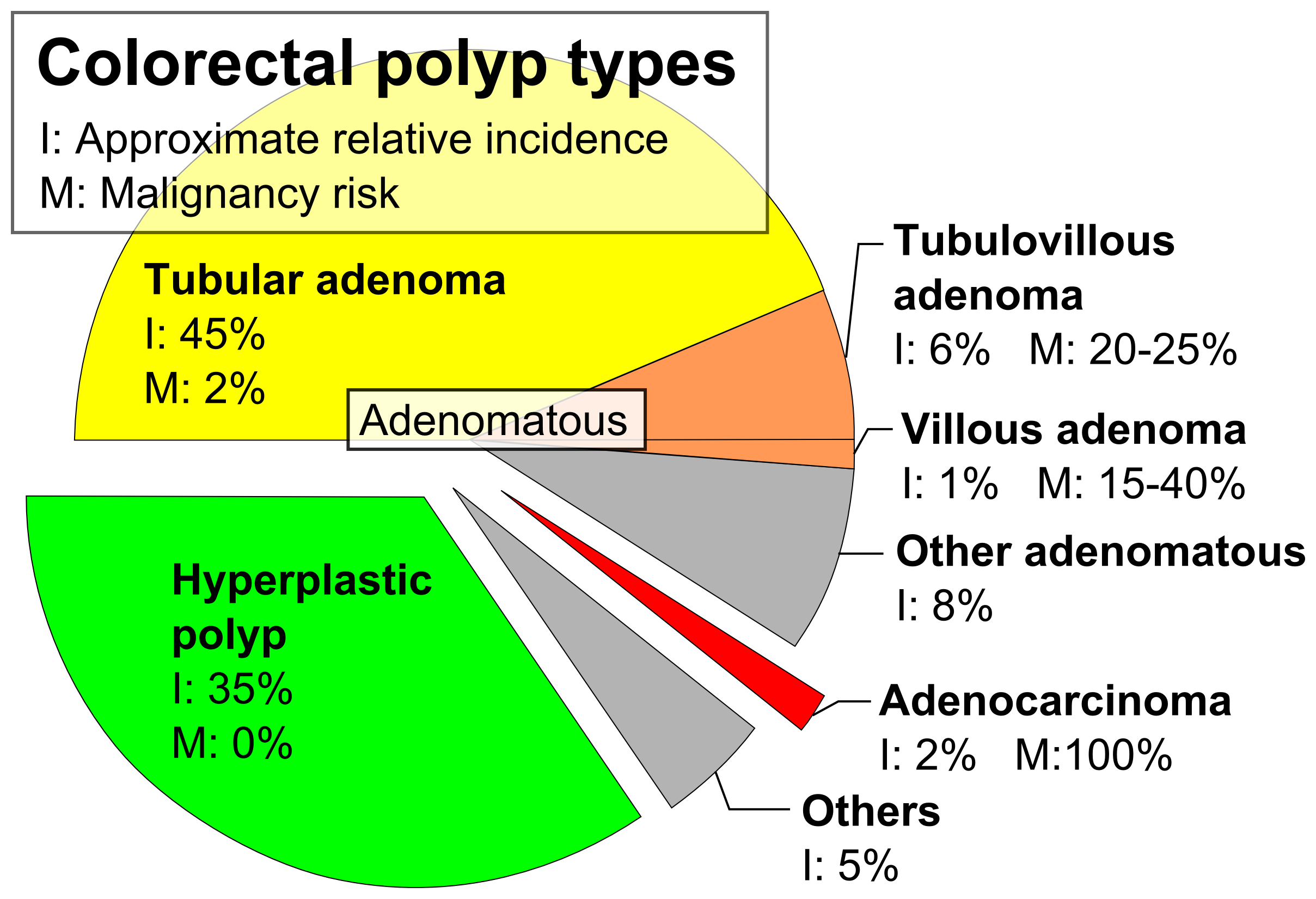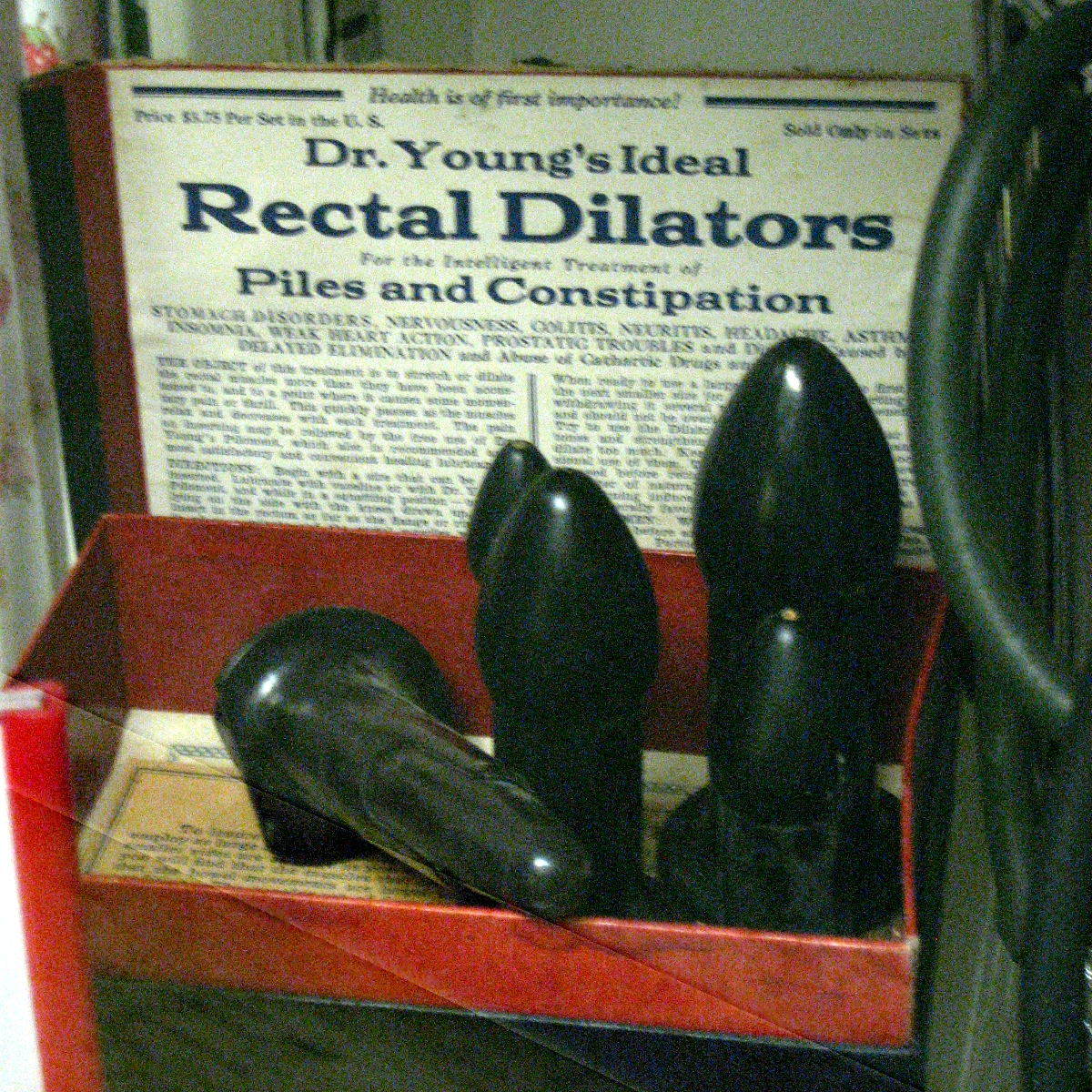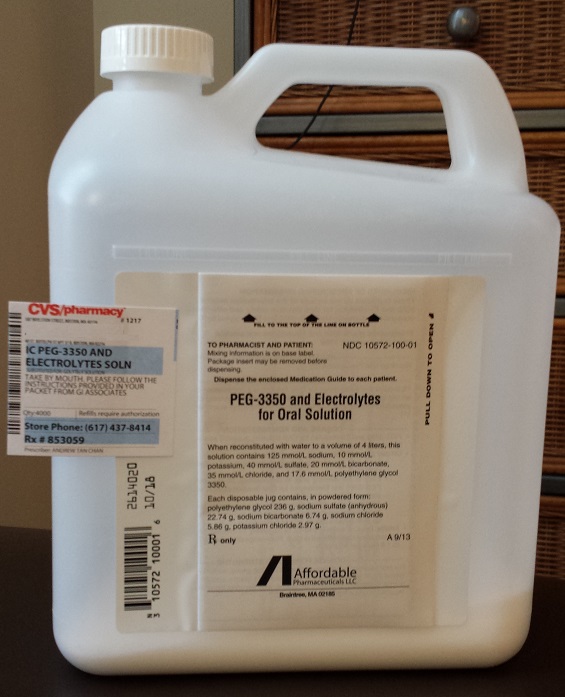|
Proctoscopy
Proctoscopy is a common medical procedure in which an instrument called a proctoscope (also known as a rectoscope, although the latter may be a bit longer) is used to examine the anal cavity, rectum, or sigmoid colon. A proctoscope is a short, straight, rigid, hollow metal tube, and usually has a small light bulb mounted at the end. It is approximately 5 inches or 15 cm long, while a rectoscope is approximately 10 inches or 25 cm long. During proctoscopy, the proctoscope is lubricated and inserted into the rectum, and then the obturator is removed, allowing an unobstructed view of the interior of the rectal cavity. This procedure is normally done to inspect for hemorrhoids or rectal polyps and might be mildly uncomfortable as the proctoscope is inserted further into the rectum. Modern fibre-optic proctoscopes allow more extensive observation with less discomfort. Proctoscopes A proctoscope is a hollow, tube-like speculum that is used for visual inspection o ... [...More Info...] [...Related Items...] OR: [Wikipedia] [Google] [Baidu] |
Anoscope
An anoscopy is an examination using a small, rigid, tubular instrument called an anoscope (also called an anal speculum). This is inserted a few inches into the anus in order to evaluate problems of the anal canal. Anoscopy is used to diagnose hemorrhoids, anal fissures (tears in the lining of the anus), and some cancers. Process This test is usually done in a doctor's office. The patient is required to remove their underwear, and must either lie on their side on top of an examining table, with their knees bent up towards the chest, or bend forward over the table. The anoscope is 3 to 4 inches long and the width of an average-to-large bowel movement. The doctor will coat the anoscope with a lubricant and then gently push it into the anus and rectum. The doctor may ask the patient to "bear down" or push as if they were going to have a bowel movement, and then relax. This helps the doctor insert the anoscope more easily and identify any bulges along the lining of the rectum. ... [...More Info...] [...Related Items...] OR: [Wikipedia] [Google] [Baidu] |
Rectal Polyp
A colorectal polyp is a polyp (fleshy growth) occurring on the lining of the colon or rectum. Untreated colorectal polyps can develop into colorectal cancer. Colorectal polyps are often classified by their behaviour (i.e. benign vs. malignant) or cause (e.g. as a consequence of inflammatory bowel disease). They may be benign (e.g. hyperplastic polyp), pre-malignant (e.g. tubular adenoma) or malignant (e.g. colorectal adenocarcinoma). Signs and symptoms Colorectal polyps are not usually associated with symptoms. When they occur, symptoms include bloody stools; changes in frequency or consistency of stools (such as a week or more of constipation or diarrhoea); and fatigue arising from blood loss. Anemia arising from iron deficiency can also present due to chronic blood loss, even in the absence of bloody stools. Another symptom may be an increased mucus production especially those involving villous adenomas. Copious production of mucous causes loss of potassium that can occasio ... [...More Info...] [...Related Items...] OR: [Wikipedia] [Google] [Baidu] |
Rectal Dilator
A rectal or anal dilator is a medical device similar to a speculum designed to open and relax the internal/external anal sphincter and rectum in order to facilitate medical inspection or relieve constipation. One early version of a rectal dilator was Dr. Young's Ideal Rectal Dilators, invented in 1892. Rectal dilators are also used as sex toys. See also * Anal plug, a medical device for treating anal incontinence * Butt plug, a sex toy resembling an anal dilator * Proctoscope, another medical device inserted anally * Vaginal dilator A vaginal dilator (sometimes called a vaginal trainer) is an instrument used to gently stretch the vagina. They are used when the vagina has become narrowed ( vaginal stenosis), such as after brachytherapy for gynecologic cancers, and as therapy ..., an equivalent device for dilating the vagina References Medical equipment Gastroenterology Anal sex toys {{medical-equipment-stub ... [...More Info...] [...Related Items...] OR: [Wikipedia] [Google] [Baidu] |
Rubber Band Ligation
Rubber band ligation (RBL) is an outpatient treatment procedure for internal hemorrhoids of any grade. There are several different devices a physician may use to perform the procedure, including the traditional metal devices, endoscopic banding, and the CRH O'Regan System. With rubber band ligation, a small band is applied to the base of the hemorrhoid, stopping the blood supply to the hemorrhoidal mass. The hemorrhoid will shrink and fibrose within a few days with shriveled hemorrhoidal tissue and band falling off during normal bowel movements - likely without the patient noticing. Rubber band ligation is a popular procedure for the treatment of hemorrhoids, as it involves a much lower risk of pain than surgical treatments of hemorrhoids, as well as a shorter recovery period (if any at all). It is a very effective procedure and there are multiple methods available. When done with the CRH O’Regan System, it is also associated with a recurrence rate of 5% at 2 years. The proce ... [...More Info...] [...Related Items...] OR: [Wikipedia] [Google] [Baidu] |
Hemorrhoids
Hemorrhoids (or haemorrhoids), also known as piles, are vascular structures in the anal canal. In their normal state, they are cushions that help with stool control. They become a disease when swollen or inflamed; the unqualified term ''hemorrhoid'' is often used to refer to the disease. The signs and symptoms of hemorrhoids depend on the type present. Internal hemorrhoids often result in painless, bright red rectal bleeding when defecating. External hemorrhoids often result in pain and swelling in the area of the anus. If bleeding occurs, it is usually darker. Symptoms frequently get better after a few days. A skin tag may remain after the healing of an external hemorrhoid. While the exact cause of hemorrhoids remains unknown, a number of factors that increase pressure in the abdomen are believed to be involved. This may include constipation, diarrhea, and sitting on the toilet for long periods. Hemorrhoids are also more common during pregnancy. Diagnosis is made by lookin ... [...More Info...] [...Related Items...] OR: [Wikipedia] [Google] [Baidu] |
Anoscopy
An anoscopy is an examination using a small, rigid, tubular instrument called an anoscope (also called an anal speculum). This is inserted a few inches into the anus in order to evaluate problems of the anal canal. Anoscopy is used to diagnose hemorrhoids, anal fissures (tears in the lining of the anus), and some cancers. Process This test is usually done in a doctor's office. The patient is required to remove their underwear, and must either lie on their side on top of an examining table, with their knees bent up towards the chest, or bend forward over the table. The anoscope is 3 to 4 inches long and the width of an average-to-large bowel movement. The doctor will coat the anoscope with a lubricant and then gently push it into the anus and rectum. The doctor may ask the patient to "bear down" or push as if they were going to have a bowel movement, and then relax. This helps the doctor insert the anoscope more easily and identify any bulges along the lining of the rectum. ... [...More Info...] [...Related Items...] OR: [Wikipedia] [Google] [Baidu] |
Endoscopy
An endoscopy is a procedure used in medicine to look inside the body. The endoscopy procedure uses an endoscope to examine the interior of a hollow organ or cavity of the body. Unlike many other medical imaging techniques, endoscopes are inserted directly into the organ. There are many types of endoscopies. Depending on the site in the body and type of procedure, an endoscopy may be performed by either a doctor or a surgeon. A patient may be fully conscious or anaesthesia, anaesthetised during the procedure. Most often, the term ''endoscopy'' is used to refer to an examination of the upper part of the human gastrointestinal tract, gastrointestinal tract, known as an esophagogastroduodenoscopy. For nonmedical use, similar instruments are called borescopes. History Adolf Kussmaul was fascinated by sword swallowers who would insert a sword down their throat without gagging. This drew inspiration to insert a camera, the next problem to solve was how to insert a source of light, as ... [...More Info...] [...Related Items...] OR: [Wikipedia] [Google] [Baidu] |
Colonoscopy
Colonoscopy () or coloscopy () is the endoscopic examination of the large bowel and the distal part of the small bowel with a CCD camera or a fiber optic camera on a flexible tube passed through the anus. It can provide a visual diagnosis (''e.g.,'' ulceration, polyps) and grants the opportunity for biopsy or removal of suspected colorectal cancer lesions. Colonoscopy can remove polyps smaller than one millimeter. Once polyps are removed, they can be studied with the aid of a microscope to determine if they are precancerous or not. Colonoscopy is similar to sigmoidoscopy—the difference being related to which parts of the colon each can examine. A colonoscopy allows an examination of the entire colon (1,200–1,500mm in length). A sigmoidoscopy allows an examination of the distal portion (about 600mm) of the colon, which may be sufficient because benefits to cancer survival of colonoscopy have been limited to the detection of lesions in the distal portion of the colon. [...More Info...] [...Related Items...] OR: [Wikipedia] [Google] [Baidu] |
Sigmoidoscopy
Sigmoidoscopy (from the Greek term for letter " s/ς" + "eidos" + "scopy": namely, to look inside an "s"/"ς"-like object) is the minimally invasive medical examination of the large intestine from the rectum through to the nearest part of the colon, the sigmoid colon. There are two types of sigmoidoscopy: flexible sigmoidoscopy, which uses a flexible endoscope, and rigid sigmoidoscopy, which uses a rigid device. Flexible sigmoidoscopy is generally the preferred procedure. A sigmoidoscopy is similar to, but not the same as, a colonoscopy. A sigmoidoscopy only examines up to the sigmoid, the most distal part of the colon, while colonoscopy examines the whole large bowel. Flexible sigmoidoscopy Flexible sigmoidoscopy enables the physician to look at the inside of the large intestine from the rectum to the left side of the colon, called the sigmoid. Physicians may use the procedure to find the cause of diarrhea, abdominal pain, or constipation. They also use it to look for benign an ... [...More Info...] [...Related Items...] OR: [Wikipedia] [Google] [Baidu] |
Microscope
A microscope () is a laboratory instrument used to examine objects that are too small to be seen by the naked eye. Microscopy is the science of investigating small objects and structures using a microscope. Microscopic means being invisible to the eye unless aided by a microscope. There are many types of microscopes, and they may be grouped in different ways. One way is to describe the method an instrument uses to interact with a sample and produce images, either by sending a beam of light or electrons through a sample in its optical path, by detecting photon emissions from a sample, or by scanning across and a short distance from the surface of a sample using a probe. The most common microscope (and the first to be invented) is the optical microscope, which uses lenses to refract visible light that passed through a thinly sectioned sample to produce an observable image. Other major types of microscopes are the fluorescence microscope, electron microscope (both the transmi ... [...More Info...] [...Related Items...] OR: [Wikipedia] [Google] [Baidu] |
Biological Tissue
In biology, tissue is a biological organizational level between cells and a complete organ. A tissue is an ensemble of similar cells and their extracellular matrix from the same origin that together carry out a specific function. Organs are then formed by the functional grouping together of multiple tissues. The English word "tissue" derives from the French word "tissu", the past participle of the verb tisser, "to weave". The study of tissues is known as histology or, in connection with disease, as histopathology. Xavier Bichat is considered as the "Father of Histology". Plant histology is studied in both plant anatomy and physiology. The classical tools for studying tissues are the paraffin block in which tissue is embedded and then sectioned, the histological stain, and the optical microscope. Developments in electron microscopy, immunofluorescence, and the use of frozen tissue-sections have enhanced the detail that can be observed in tissues. With these tools, the c ... [...More Info...] [...Related Items...] OR: [Wikipedia] [Google] [Baidu] |
Biopsy
A biopsy is a medical test commonly performed by a surgeon, interventional radiologist, or an interventional cardiologist. The process involves extraction of sample cells or tissues for examination to determine the presence or extent of a disease. The tissue is then fixed, dehydrated, embedded, sectioned, stained and mounted before it is generally examined under a microscope by a pathologist; it may also be analyzed chemically. When an entire lump or suspicious area is removed, the procedure is called an excisional biopsy. An incisional biopsy or core biopsy samples a portion of the abnormal tissue without attempting to remove the entire lesion or tumor. When a sample of tissue or fluid is removed with a needle in such a way that cells are removed without preserving the histological architecture of the tissue cells, the procedure is called a needle aspiration biopsy. Biopsies are most commonly performed for insight into possible cancerous or inflammatory conditions. History T ... [...More Info...] [...Related Items...] OR: [Wikipedia] [Google] [Baidu] |







